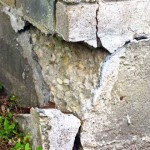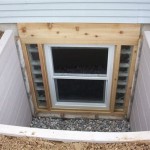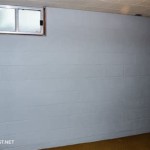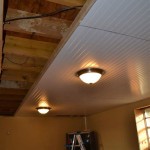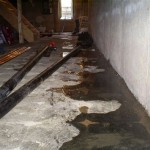Best Paint for Basement Ceiling: Essential Aspects to Consider
Transforming your basement into a livable space requires careful consideration of every element, including the ceiling. Selecting the best paint for your basement ceiling is crucial for both aesthetics and functionality. Here are the essential aspects to bear in mind:
1. Moisture Resistance
Basements are notoriously damp environments, prone to humidity and potential leaks. A moisture-resistant paint is vital to prevent peeling, bubbling, and mildew growth. Look for paints specifically labeled as "moisture-resistant" or "mold and mildew-resistant."
2. Mildew Resistance
Mildew thrives in moist environments. Choose a paint with anti-microbial properties to inhibit mold growth and keep your basement ceiling clean and healthy. Paints with additives such as zinc oxide or copper micronized agents provide excellent mildew resistance.
3. Finish Type
The finish of the paint determines its durability and appearance. For basement ceilings, consider the following options:
- Flat: Hides imperfections well but is less resistant to stains and moisture.
- Matte: Similar to flat but slightly more durable and stain-resistant.
- Eggshell: Slightly glossy, providing a subtle sheen while still being easy to clean.
- Satin: Smooth and semi-glossy, offering excellent stain resistance and washability.
- Semi-Gloss: Highly durable and moisture-resistant, suitable for high-traffic areas.
4. Coverage
Coverage refers to the area the paint can cover in a single coat. Choose a paint with high coverage to minimize the number of coats required, saving time and effort. Check the paint can for square footage coverage estimates.
5. Color
Color plays a significant role in the ambiance of your basement. Lighter colors, such as white or beige, can make the space feel larger and brighter, while darker colors create a cozy atmosphere. Consider the size of your basement and the desired mood when selecting the color.
6. Application
A paint with good application properties will go on smoothly and evenly. Look for paints with low splatter and good flow. If you plan to paint the ceiling yourself, consider using a paint sprayer for a professional finish.
7. VOC Levels
Volatile organic compounds (VOCs) are chemicals that evaporate from paint and can contribute to indoor air pollution. Choose a paint with low VOC levels to ensure a healthy indoor environment in your basement.
Conclusion
Choosing the best paint for your basement ceiling involves balancing factors such as moisture resistance, mildew resistance, finish type, coverage, color, application, and VOC levels. By considering these aspects thoroughly, you can select a paint that will enhance the functionality, durability, and aesthetics of your basement ceiling for years to come.

Deciding What Color To Paint Basement Ceiling

How To Paint An Unfinished Basement Ceiling Semigloss Design

Tales Of Painted Basement Ceilings And Pole Dancing Woes Beth Bryan

Tales Of Painted Basement Ceilings And Pole Dancing Woes Beth Bryan

A Practical Guide To Black Basement Ceiling The Best Ideas

Our Painted Basement Ceiling Without A Sprayer And The Perfect Black Paint This Diy Life

Painting An Unfinished Basement Ceiling A Little Diy

Painting An Exposed Basement Ceiling Black White Or Gray

15 Basement Ceiling Ideas To Inspire Your Space Bob Vila

Our Painted Basement Ceiling Without A Sprayer And The Perfect Black Paint This Diy Life
Related Posts


